Kevin DeYoung's Blog, page 192
December 23, 2010
Of The Father's Love Begotten
Aurelius Clemens Prudentius was born in Spain in 348 A.D. He was loyal to the Roman Empire and considered it an "instrument in the hands of Providence for the advancement of Christianity."
Thirty-five years prior to his birth, Christianity had been granted full toleration under the Edict of Milan. With Constantine's conversion, Christianity became the favored religion of the Empire, a change that is oft maligned by younger evangelicals suspicious of "Christendom," but must have been a welcome relief and answer to prayer for the beleagured saints in the fourth century.
Prudentius was trained to be a lawyer and rose to high office, serving as a powerful judge. He rose through the ranks of the state and finished his civil career as a court official for the Christian Emperor Theodosius.
At the age of fifty-seven, at the height of his power and prestige, Prudentius grew weary of civic life and considered his life thus far to have been a waste. He was having a midlife crisis (or, given the age span at the time, more like an almost-at-the-end-of-my-life crisis). So the successful lawyer, judge, and civil servant retired to write hymns and poetry. For the last decade of his life, before his death around 413, Prudentius wrote some of the most beautiful hymns of his day.
His poetry was treasured throughout the Middle Ages. His collection of twelve long poems (Cathemerinon), one for each hour of the day, became the foundation for several of the office hymns of the church. But without a doubt, Prudentius' best known hymn today is Corde Natus Ex Parentis–Of the Father's Love Begotten.
It was translated into English by John Mason Neale and Henry Baker in the 1850s. It was included in the book Hymns Ancient and Modern and given the plainsong chant-like melody Divinum Mysterium (Divine Mystery), which may date back as far as the twelfth century.
The hymn/poem originally contained nine verses. The song tells the story of redemption. Verse one speaks of the Son's eternal nature. Verse two is about creation. Verse three chronicles the fall. Verse four moves into redemption with the virgin birth. Verse five links the Christ child to ancient prophecies. Verse six is a chorus of praise to the Messiah. Verse seven warns of final judgment for the wicked. Verse eight tells of men, women, and children singing their songs of praise. And verse nine concludes the hymn with a song of victory to Father, Son, and Holy Spirit. Most Christians will recognize many of the verses, but sadly not all.
Of the Father's love begotten,
Ere the worlds began to be,
He is Alpha and Omega,
He the source, the ending He,
Of the things that are, that have been,
And that future years shall see,
Evermore and evermore!
At His Word the worlds were framèd;
He commanded; it was done:
Heaven and earth and depths of ocean
In their threefold order one;
All that grows beneath the shining
Of the moon and burning sun,
Evermore and evermore!
He is found in human fashion,
Death and sorrow here to know,
That the race of Adam's children
Doomed by law to endless woe,
May not henceforth die and perish
In the dreadful gulf below,
Evermore and evermore!
O that birth forever blessèd,
When the virgin, full of grace,
By the Holy Ghost conceiving,
Bare the Saviour of our race;
And the Babe, the world's Redeemer,
First revealed His sacred face,
evermore and evermore!
O ye heights of heaven adore Him;
Angel hosts, His praises sing;
Powers, dominions, bow before Him,
and extol our God and King!
Let no tongue on earth be silent,
Every voice in concert sing,
Evermore and evermore!
This is He Whom seers in old time
Chanted of with one accord;
Whom the voices of the prophets
Promised in their faithful word;
Now He shines, the long expected,
Let creation praise its Lord,
Evermore and evermore!
Righteous judge of souls departed,
Righteous King of them that live,
On the Father's throne exalted
None in might with Thee may strive;
Who at last in vengeance coming
Sinners from Thy face shalt drive,
Evermore and evermore!
Thee let old men, thee let young men,
Thee let boys in chorus sing;
Matrons, virgins, little maidens,
With glad voices answering:
Let their guileless songs re-echo,
And the heart its music bring,
Evermore and evermore!
Christ, to Thee with God the Father,
And, O Holy Ghost, to Thee,
Hymn and chant with high thanksgiving,
And unwearied praises be:
Honour, glory, and dominion,
And eternal victory,
Evermore and evermore!
I couldn't find a real good rendition of the song online. The clip below is not much to look at (ok, there's really nothing to look at), but the sound is lovely.
December 22, 2010
Santa Claus with the Baby in Bethlehem (Part 2)
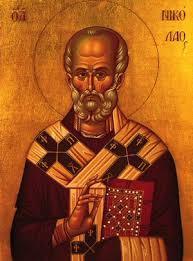 Christmas and St. Nicholas
Christmas and St. Nicholas
In honor of St. Nicholas the gift giver, Christians began to celebrate December 6 (his feast day) by giving presents. The tradition developed over time. For good boys and girls, St. Nicholas would come in his red Bishop's robe and fill boots with gifts on the night of December 5. For bad boys and girls St. Nicholas was to be feared. In highly catholic parts of Europe, St. Nicholas became a deterrent to erring young children. In Germany, he was often accompanied by Knecht Ruprecht (farmhand Rupert) who threatened to eat misbehaving children. In Switzerland, St. Nicholas threatened to put wicked children in a sack and bring them back to the Black Forest. In the Netherlands, St. Nicholas' helper would tie them in a sack and bring them back to Spain. In parts of Austria, the priest, dressed up in Christmas garb, would visit the homes of naughty children and threaten them with rod-beatings. At least nowadays, he only checks his list!
Not surprisingly, the Reformers were less than friendly towards the traditions that had been built up around the saints. Luther rejected the saints' days, believing they were built upon legends and superstitions (and a virulent strain of moralism we might add). In Germany, Luther replaced Saint Nicholas' Day with a different holiday, Christ Child, or Christkindl. Ironically, Kriss Kringle which derived from Luther's Christ Child holiday, has become just another name for St. Nicholas.
From St. Nicholas to Santa Claus
The cult of St. Nicholas virtually disappeared in Protestant Europe, with the exception of one country: the Netherlands. If you love Christmas with all the trappings of Santa Claus and stockings and presents, thank the Dutch. If you despise all that, try to ignore my last name for the time being. The Puritans had done away with St. Nicholas and banned Christmas altogether. But the Dutch held on to their tradition and brought it with them to the New World. In the Netherlands Sint Nicolaas was contracted to Sinterklaas. According to Dutch tradition, Sinterklaas rides a horse and is accompanied by Zwarte Piet, or Black Pete. Many people figure black Pete was derived from black slaves, although others counter and say that he is black because he goes down the chimney and gets a face full of soot.
At any rate, it is easy to see how Sinterklaas evolved in America to Santa Claus. Santa Claus became the Santa we know in the United States only after the poem "Twas the Night Before Christmas" was written in 1823. Possibly the best known verses ever written by an American, the poem has greatly influenced the tradition of Santa in the English speaking world and beyond. Jolly Old St. Nick and Jesus
Jolly Old St. Nick and Jesus
How should Christians relate to the traditions of Santa Claus? C.S. Lewis embraced them and so included Father Christmas in The Lion, the Witch, and the Wardrobe. Other Christians, fearing syncretism, stay clear of Santa, reindeer, and a tree full of presents. I'll leave it to you and your family to form you opinions on observing the Christmas holiday (see Rom. 14:1, 5-6). Personally, we try to walk in the middle of the road on this one: we don't teach our kids about Santa, but we are happy to enjoy It's a Wonderful Life, a couple Christmas trees, and a little Bing Crosby. And if the kids, picking up bits and pieces from other places, end of listening for flying reindeer landing on the roof, we're not going to introduce the laws of physics to crush their anticipation. Most of all, of course, we try to press home that Christmas is about Christ.
But if you have a lot of Santa Claus around, why not use him to your benefit and talk about the real St. Nicholas. We don't know a lot about him, but we know he lived and was revered. According to legend–one of those stories that probably isn't true, but should be–when Nicholas was little boy he would get up early in the morning to go to church and pray. One morning, the aging priest had a vision that the first one to enter the church in the morning should be the new bishop of Myra. When Nicholas was the first to enter, the old priest, obeying the vision, made the young boy bishop right on the spot. But before he consecrated Nicholas a bishop, the priest asked him a question. "Who are you, my son?" According to tradition, the child whose legend would one day become Santa Claus replied, "Nicholas the sinner." Not bad for a little boy.
With what little we know about St. Nicholas, it is safe to say he would not be pleased to know he had eclipsed Christ in the hearts of many as the central figure of Christmas. For the Bishop of Myra no doubt knew the angel's words to Joseph: "Mary will give birth to a son, and you are to give him the name Jesus, because he will save his people from their sins."
So this Christmas, give gifts if you like. We will in our family. Receive them all with thanksgiving. But do not forget what we need most–salvation from our sins. This is one gift the real St. Nicholas would not have overlooked. In fact, I'm convinced, if given the opportunity, he would have loved to be there with the shepherds and the angels, bowing down around the manger in Bethlehem. And I bet he would have brought a present too.
December 21, 2010
Santa Claus with the Baby in Bethlehem (Part 1)
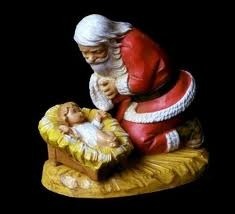 Is there anything quite as tacky as making Santa Claus kneel before the manger? Is this a weak attempt at baptizing secular Christmas traditions? Or is it a subtle slam at secluarism (Ha, Ha! Your Santa bows to our Savior!")? I'm not sure, but either way it seems a bit off.
Is there anything quite as tacky as making Santa Claus kneel before the manger? Is this a weak attempt at baptizing secular Christmas traditions? Or is it a subtle slam at secluarism (Ha, Ha! Your Santa bows to our Savior!")? I'm not sure, but either way it seems a bit off.
But then again, maybe not.
If you know anything about the real Santa Claus, the man who has become the namesake for all that seems kitschy and consumerist about Christmas, I imagine he'd appreciate the chance to worship the little babe in the straw.
So who exactly was St. Nicholas? The unsatisfying answer is that nobody knows for sure. To quote one Nicholas scholar "We can grant a bishop of that name who had a great impact on his homeland. We can also accept December 6 as the day of his death and burial. These are all the facts we can hold to. Further we cannot go." (Gustav Anrich quoted by Charles W. Jones in Saint Nicholas of Bari, Myra, and Manhattan).
According to the best estimates, Nicholas, was born around 280 AD in Patara, in Asia Minor. He later became bishop of Myra in modern day Turkey. Nicholas, it seems, died about 343 on or near December 6. That is the date of his Feast Day in the Catholic church.
There is no record of his existence attested in any document until the 6th century. By that time Nicholas, whoever he had been, was already famous. The emperor Justinian dedicated a church to him in Constantinople. Initially, Nicholas was most well known in the East (he is a hierarch in the Eastern Orthodox Church). But by 900, a Greek wrote "The West as well as the East acclaims and glorifies him. Wherever there are people, his name is revered and churches are built in his honor. All Christians reverence his memory and call upon his protection." In 1087, Italian sailors stole his supposed relics and took them from Myra to Bari, Italy. This greatly increased his popularity in Europe and made Bari one of the most crowded pilgrimage sites. It is said that Nicholas was represented by medieval artists more than any other saint except Mary.
The Man and the Myth
Why was Nicholas so famous? Well, it's impossible to tell fact from fiction, but this is some of the legend of St. Nicholas:
He was reputed to be a wonder-worker who brought children back to life, destroyed pagan temples, saved sailors from death at sea, and as an infant nursed only two days a week and fasted the other five days.
Moving from plain legend to possible history, Nicholas was honored for enduring persecution. It is said that he was imprisoned during the Empire wide persecution under Diocletian and Maximian. Upon his release and return, the people flocked around him "Nicholas! Confessor! Saint Nicholas has come home!"
Nicholas was also hailed as a defender of orthodoxy. Later sources claim he was in attendance at the council of Nicea. According to tradition, he was a staunch opponent of Arianism. Writing five centuries after his death, one biographer wrote "Thanks to the teaching of St. Nicholas, the metropolis of Myra alone was untouched by the filth of the Arian heresy, which it firmly rejected as a death-dealing poison." Stories of his courage abound, one claiming that Nicholas traveled to Nicea and, upon arrival, promptly slapped Arius in the face. As the story goes, the rest of the council was shocked and appalled, so much so that they were going to remove Nicholas from his bishopric, that is until Jesus and Mary appeared to defend him. According to the same legend, this apparition changed the minds of the delegates who quickly recanted of their outrage.
[image error]As you might have guessed, Nicholas was also revered for being a generous gift giver. Born into a wealth family, he inherited the fortune when his parents died. Apparently he gave his vast fortune away. The most famous story involved three girls who were so destitute that they were going to be forced into a life of prostitution. But Nicholas threw three bags of gold through the window as dowries for the young woman.
Over time, Saint Nicholas became the patron saint of nations like Russia and Greece, cities like Fribourg and Moscow, and of children, sailors, unmarried girls, merchants, and pawnbrokers (the three gold balls hung outside pawn shops are symbolic of the three bags of gold).
Come back tomorrow for Part 2 as we explore how a Turkish Bishop became an American icon.
December 20, 2010
I'm Worse Off Than I Thought!
Most of you can ignore this post. But for my friends, my family, and my wonderful congregation, this TIME article raises the question you may have been too scared to ask me.
Monday Morning Humor
December 18, 2010
The New Scarlet Letter is H
Here's a good piece by Matthew J. Franck in the Washington Post on the ubiquitous role of the "hate card" in debates over homosexuality and gay marriage.
The upshot:
Marginalize, privatize, anathematize: These are the successive goals of gay-marriage advocates when it comes to their opponents.
First, ignore the arguments of traditional marriage's defenders, that marriage has always existed in order to bring men and women together so that children will have mothers and fathers, and that same-sex marriage is not an expansion but a dismantling of the institution. Instead, assert that no rational arguments along these lines even exist and so no refutation is necessary, and insinuate that those who merely want to defend marriage are "anti-gay thugs" or "theocrats" or "Taliban," as some critics have said.
Second, drive the wedge between faith and reason, chasing traditional religious arguments on marriage and morality underground, as private forms of irrationality.
Finally, decree the victory of the new public morality – here the judges have their role in the liberal strategy – and read the opponents of the new dispensation out of polite society, as the crazed bigots of our day.
Read the whole thing.
Fighting Manger Fatigue
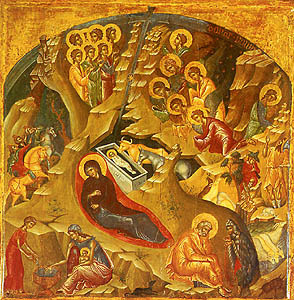
G.K. Chesterton:
So also in the specially Christian case we have to react against the heavy bias of fatigue. It is almost impossible to make the facts vivid, because the facts are familiar; and for fallen men it is often true that familiarity is fatigue.
I am convinced that if we tell the supernatural story of Christ word for word as of a Chinese hero, call him the Son of Heaven instead of the Son of God, and trace his rayed nimbus in the gold thread of Chinese embroideries or the gold lacquer of Chinese pottery, instead of in the gold leaf of our own Catholic paintings, there would be a unanimous testimony to the spiritual purity of the story. We should hear nothing then of the injustice of substitution or of the illogicality of the atonement, of the superstitious exaggeration of the burden of sin or the impossible insolence of an invasion of the laws of nature.
We should admire the chivalry of the Chinese conception of a god who fell from the sky to fight the dragons and save the wicked from being devoured by their own fault and folly. We should admire the subtlety of the Chinese view of life, which perceives that all human imperfection in in very truth a crying imperfection. We should admire the Chinese esoteric and superior wisdom, which said there are higher cosmic laws than the laws we know; we believe every Indian conjurer who chooses to come to us and talk in the same style. If Christianity were only a new oriental fashion, it would never be reproached with being an old oriental faith. (The Everlasting Man, 17-18)
December 17, 2010
You Love Classical Music But Just Don't Know It
I found this clip on Thabiti's blog. Twenty minutes is really long for watching a clip on your computer (you might want to close your door first if you're at work). But Thabiti said it was worth watching. And it is.
I'm not a classical music buff. I'm definitely in the second category he mentions–I listen to it pretty regularly (especially at work) and enjoy it, but I'm no aficionado. Still, there are several reasons to watch the video.
1. This man is a great teacher. He uses illustrations well, connects with his audience, and imparts more than just information. I'm sure it helps that he's probably given this talk a zillion times.
2. They listen, in part, because he is passionate and excited to be talking about what he loves. Preachers, pay attention.
3. He is optimistic, not in a schmaltzy way (ok, a little of that at times), but mostly in a contagious, energetic way. He believes classic musical is wonderful and people will love it if they only can understand it. What if we believed the gospel was wonderful and amazing and thrilling and people just need to "get it? Of course, the difference is, it takes a miracle of regeneration to fully accept the gospel where it takes no such miracle to like Chopin (although maybe close to that in some people!). But the point still holds: we have a treasure to unveil in Christ, if only others could see what we see.
4. Maybe there are things we can do in worship–creeds, liturgies, long prayers, prayers of confession, responsive readings, theologically rich songs, old hymns, a stirring organ postlude, even some "high" forms of music–that would be possible, even welcomed and edifying, if we made an effort to instruct our people on why we are doing what we're doing. I believe there is a place for both "folk" and "fine" elements in worship, but in most churches these days the "fine" is harder to incorporate because people don't understand it or like it immediately. Twenty-five minutes of singing three chord songs is easily accessible, while some hymns, some liturgical elements, and some forms of music will seem uninspiring at first. We need to help our people see why we do a prayer of confession and assurance of pardon. People need instruction regarding worship and doxology, just like they need instruction if they are to understand and appreciate the riches of the Bible and theology.
Maybe Christians love good meaty theology and love thoughtful, historically rich worship but they just don't know it yet?
December 16, 2010
Best Books of 2010: A Baker's Dozen
This is without a doubt the most time consuming blog post of the year. You have to read a lot of books to be able to pick some of the best! But this is also one of my favorite posts of the year; it's like revisiting new friends.
This year I've chosen a baker's dozen of the best books of 2010. There is nothing scientific or comprehensive about this list. These are simply my favorite books–Christian and secular–from the past year. Favorite means I learned something, I enjoyed reading them, and have already recommended them to others. Obviously, I may not agree with every point in every book, nor am I recommending everything the author has ever written.
Enough with the introduction, here is my list of the Best Books of 2010.
13. Bradley R.E. Wright. Christians are Hate-Filled Hypocrites…and Other Lies You've Been Told (Bethany House)

Bad stats and misused data are pet peeves of mine. This book mercifully exposes some of both.
12. Victor Davis Hanson. The Father of Us All: War and History, Ancient and Modern (Bloomsbury Press)
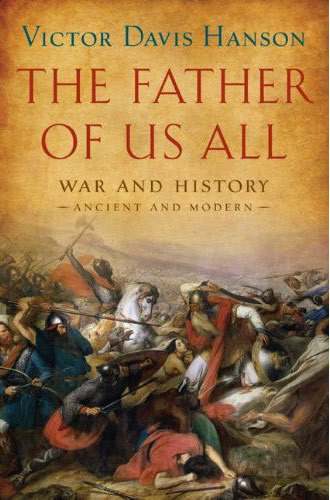
Maybe it was because I knew so little about most subjects in the book that I found it all extremely fascinating.
11. Timothy Z. Witmer. The Shepherd Leader: Achieving Effective Shepherding in Your Church (P&R Publishing)
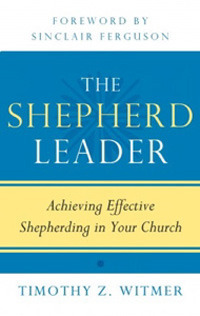
Every elder board should read this book and implement at least some of its advice.
10. Sam Storms and Justin Taylor, eds. For the Fame of God's Name: Essays in Honor of John Piper (Crossway)
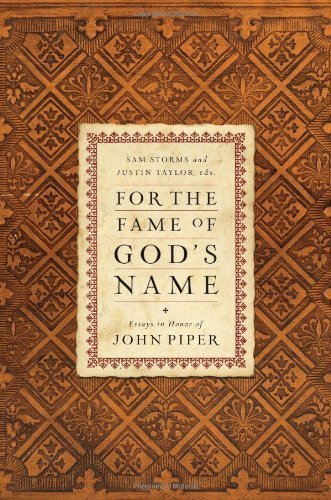
Fantastic contributions by Carson, Mahaney, Powlison and others. Plus, I'll never forget being in Minneapolis, sitting by C.J. in the third row, as Sam and Justin surprised Piper with this book. Like many others, I shed some tears that day.
9. William Powers. Hamlet's Blackberry: A Practical Philosophy for Building a Good Life in the Digital Age (Harper)
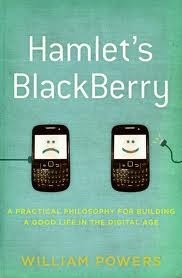
One of the most convicting things I read all year.
8. Larry Osborne. Sticky Teams: Keeping Your Leadership Team and Staff on the Same Page (Zondervan)
[image error]
There is a lot of wisdom here. Funny too.
7. James Davison Hunter. To Change the World: The Irony, Tragedy, and Possibility of Christianity in the Late Modern World (Oxford University Press)
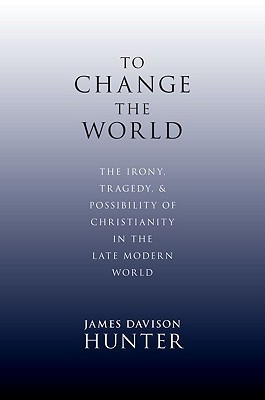
Not a perfect book, but Hunter's emphasis on institutions, his critique on Christian political engagement, and his term "faithful presence" might be game-changers.
6. Fred Zaspel. The Theology of B.B. Warfield: A Systematic Summary (Crossway)
[image error]
Do you wish Warfield had written a systematic theology? Now he has. I found the sections on evolution and miraculous gifts especially illuminating.
5. Robert Plummer. 40 Questions about Interpreting the Bible (Kregel)

Clear, readable, engaging, informative. Use it in your church.
4. Tom Schreiner. 40 Questions about Christians and Biblical Law (Kregel)
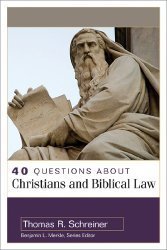
Same as above. This is looking like a great series.
3. Peter J. Leithart. Defending Constantine: The Twilight of an Empire and the Dawn of Christendom (IVP Academic)
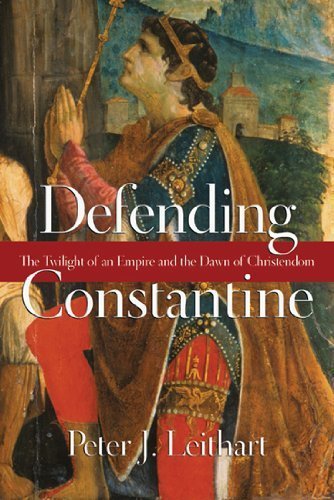
If you've ever blamed Constantine for anything (or everything!) you should read this book. Leithart makes a plausible case that though he was a flawed egoist (and probably more flawed than Leithart lets on), Constantine was a genuine Christian whose legacy has been distorted by Hauerwas, Yoder, and almost everybody else who's decried "Christendom" in recent years.
2. Robert Letham. The Westminster Assembly: Reading its Theology in Historical Context (P&R Publishing)
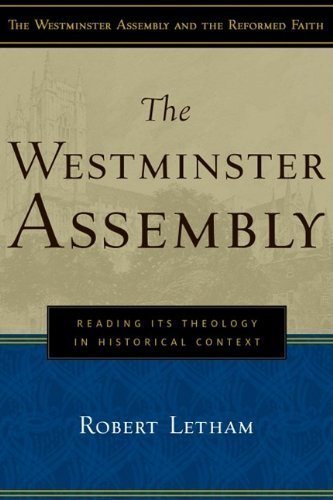
Makes good use of Chad Van Dixhoorn's massive research on the minutes of the Assembly. Letham is one of my favorite living theologians. This book was more interesting than you might think. Give it a shot (especially if you're Presbyterian).
1. Paul Johnson. Churchill (Viking)
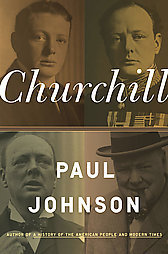
A great book by a great writer about a great man. The last six pages contain more practical wisdom than you normally find in six books.
December 15, 2010
No Time for the Meannesses of Life
Paul Johnson on one of the reasons for Winston Churchill's greatness:
Fourth, Churchill wasted an extraordinarily small amount of his time and emotional energy on the meannesses of life: recrimination, shifting the blame onto others, malice, revenge seeking, dirty tricks, spreading rumors, harboring grudges, waging vendettas. Having fought hard, he washed his hands and went on to the next contest. It is one reason for his success. There is nothing more draining and exhausting than hatred. And malice is bad for judgment.
Churchill loved to forgive and make up. His treatment of Baldwin and Chamberlain after he became prime minister is an object lesson in sublime magnanimity. Nothing gave him more pleasure than to replace enmity with friendship, not least with the Germans. (Churchill, 164-65)
The six pages of the Epilogue are the most memorable six pages I read all year.



